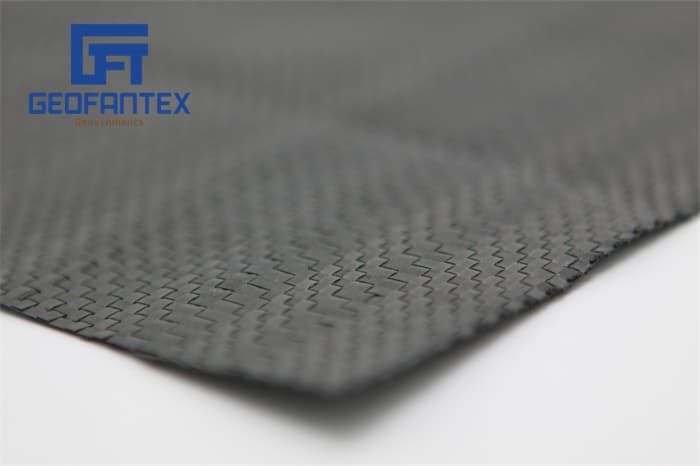Woven geotextiles are a time-tested and cost-effective solution for a variety of applications including: stabilization of construction entrances and staging areas; bridging over soft soils; separating dissimilar soils; reinforced soil structures, shoreline erosion control; and bulkheads.
There are three basic structures of woven geotextiles:

1) Slit Film Woven Geotextiles:
These are manufactured by weaving flat strands of polypropylene that are created by slitting a plastic sheet.
These geotextiles aid in construction over soft or weak soils by providing separation and stabilization and are excellent for park-on/drive-on applications. While they are permeable, slit-film geotextiles perform poorly when a gradient ratio test is performed. Therefore, they can clog. As such, they are not recommended for filtration applications such as bulkheads, erosion control or underdrains. US 200 is our most commonly used woven slit-film.
2) Monofilament Woven Geotextiles:
These are manufactured by weaving extruded, round strands of polypropylene.
Woven monofilament geotextiles have a unique property called percent open area and perform very well when a gradient ratio test is performed. Therefore, they are preferred for applications where both strength and filtration are a concern, such as shoreline rip rap and bulkhead applications. US 670 is our most commonly used monofilament.
3) Combination Woven Geotextiles:
Woven combination geotextiles are manufactured by weaving round monofilament yarns in one direction and flat tape or fibrillated yarns in the other. They provide an excellent combination of strength and hydraulics. US 230C is our most commonly used woven combination geotextile.
US Fabrics offers a full-line of woven geotextiles, including slit-films, monofilaments and combination products. We have wovens that meet each AASHTO M-288 application and a large selection that are NTPEP tested and approved. Click on the appropriate product category link below for more info on each type.
